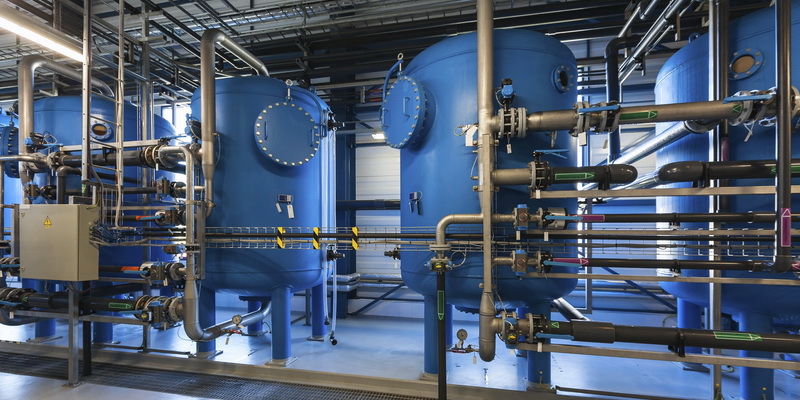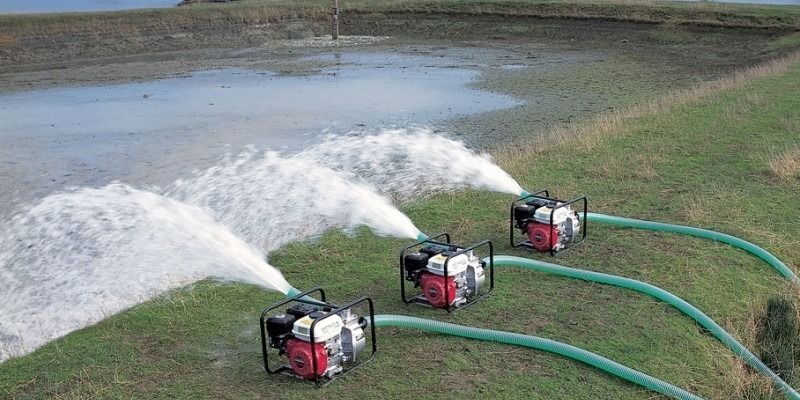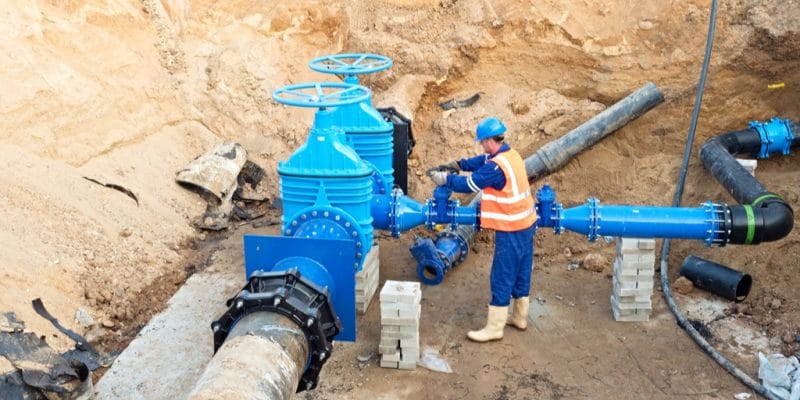Water pumps are designed for different purposes in domestic, industrial, installation, and irrigation applications.
Pumps as a means of transferring water from one point to another, with proper pressure, have become an essential tool in industrial, domestic, and agricultural uses.
Pumps commonly used for irrigation have two general categories: centrifugal pumps and displacement pumps.
These two main categories also include more detailed categories, and now we are going to elaborate on the other types of pumps.
Displacement pumps are used in large and small industries today and have accelerated our progress.
Fluid transfer activities in the past had to be performed by large numbers of people and workers or complex and large devices are now easily performed with a positive or non-positive displacement pump.
Positive displacement pumps and centrifugal or non-positive pumps are each used for a specific function.
But there is a noticeable difference between positive displacement pumps and non-positive displacement pumps, which change their efficiency to some extent and make them more suitable for different conditions.
These pumps are also known as centrifugal pumps, the most popular of which are water pumps that are used daily.

When buying a pump or booster pump, to be able to make the right choice between the two, you must consider the performance, consumption, and cost of each of these models.
In the following, we want to acquaint you more with the types of positive displacement pumps and their uses, as well as the uses of non-positive displacement pumps.
First, let's provide a definition of these pumps and examine the types of these pumps.
What Are Diaphragm Positive Displacement Pumps?
These types of pumps cause liquid flow by trapping a fixed amount of fluid and trapping it and releasing it suddenly.
Some types of positive displacement pumps use an expansion hole on the suction side and a reducing hole on the drain side.
As the cavity expands on the suction side, the liquid flows into the pump, and as the cavity collapses, the liquid exits the drain.
The volume is constant in each operating cycle.
Positive displacement pumps can be divided into three main categories: reciprocal, linear, and rotational.
The following pumps fall into the group of positive displacement pumps:
- Rotating lobe pump
- Alternating cavity pump
- Gear pump
- Piston pump
- Diaphragm pump
- Screw pump
- Gear pump
- Vane pump
- Regenerative pump (peripheral)
- Peristaltic pump
If you concluded that you need one of these types of positive displacement pumps, you should have enough information about its models to be able to make the right choice.
In a positive diaphragm displacement pump, a flexible membrane is used to move liquids instead of pistons.
As the diaphragm expands, the volume of the pump chamber increases, and fluid is drawn into the pump.
The compression of the diaphragm reduces the volume and excretion of liquids.
Diaphragm pumps have the advantage of having sealed systems, making them ideal for pumping hazardous liquids.
As you can guess the applications of positive displacement pumps in this model are more industrial.

Other Types of Positive Displacement Pumps
The circular function of reciprocal pumps causes pulses in the drain that the liquids are accelerated in the compression stage and slowed down.
This can cause vibration in the installation and often it is used as a kind of damping or smoothing.
By using two (or more) pistons, a piston in the compression stage, while the other is in suction, it can minimize the pulse.
The repeatable and predictable operation of reciprocating pumps makes them ideal for applications that require accurate measurement or accurate dosing.
By changing the amount or length of the stop, the measured values of the pumped liquid can be obtained.
Reciprocating pumps instead of moving back and forth, use gear pumps or gears to transfer liquids, which makes them one of the most interesting pumps in the type of positive displuming pumps.
The rotating element covers the pump with liquid sealing and creates suction at the pump inlet.
The fluid that is drawn into the pump is trapped inside its gear or gears and transferred to the drain chamber.
The simplest example of a positive rotary displacement pump is a gear pump.

External and Internal Positive Displacement Gear Pumps
The external gear pump consists of two interconnected gears supported by separate shafts (one of these two shafts may be idle).
The rotation of the gears traps the liquid between the gear and carries it from the inlet to the secretion around the chamber.
No liquid is transferred back through the center between the gears because they are interconnected.
The close tolerance between the gears and the cover allows the pump to suck at the inlet and prevent liquids from leaking from the drain side.
Leakage or (permeance) between the gears and the cover allows the pump to suck at the inlet and prevent liquids from leaking from the drain side. The leakage is more likely to occur with low viscosity liquids.
An internal positive displacement gear pump works on the same principle, but the two gears are interconnected in different sizes, one rotating inside the other.
The cavities between the two gears at the inlet are filled with fluid and transported around to the discharge gate, where it exits with a smaller gear function.
Gear pumps must be lubricated with pumped liquid and are ideal for pumping oil and other high-viscosity liquids.
For this reason, the gear pump should not be dry out.
The close tolerance between the gears and the cover means that the types of pumps are prone to wear when they are used with abrasive liquids or fluids containing soil solids.

What Is a Non-positive Displacement Pump?
Non-positive displacement pumps (or dynamic pumps) are a type of accelerator pump in which kinetic energy is added to the fluids as the flow rate increases.
This increase in velocity is converted to an increase in potential velocity (pressure) if the velocity decreases before the pump exits the pump into the discharge pipe.
As you can see, its function is opposite to positive displacement pumps, which is why they are called non-positive displacement pumps and not negative ones.
Centrifugal and impeller are examples of non-positive displacement pumps.
In general, the operation of non-positive displacement pumps is slightly more complex than positive displacement pumps, so the use of non-positive displacement pumps is less.
The operation of positive and non-positive displacement pumps is different from each other.
The conditions of their use are also different, so they should not consider as two opponents in front of each other, instead, you should choose one according to the conditions of the installation place and type of your activity.
In general, the usage function of positive gear shift pumps is very limited and suitable for certain occupations.


0
0